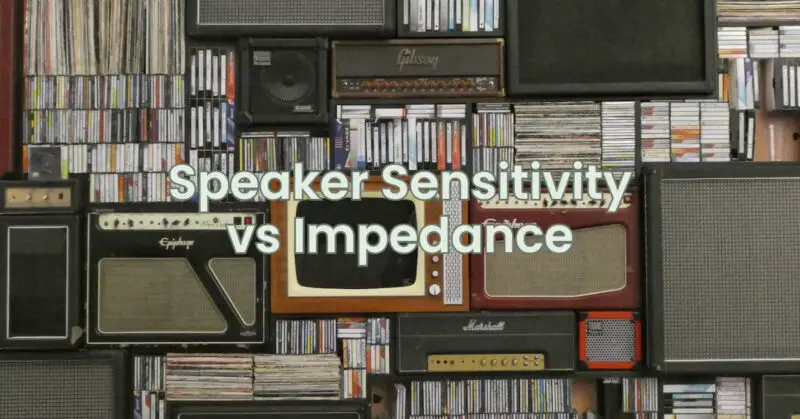When exploring the specifications of speakers, two terms that often arise are speaker sensitivity and impedance. Speaker sensitivity refers to the sound pressure level (SPL) produced by a speaker with a given amount of power, while impedance represents the electrical resistance the speaker presents to the amplifier. Understanding the relationship between speaker sensitivity and impedance is crucial for achieving optimal audio performance and ensuring compatibility between speakers and amplifiers. In this article, we will delve into the connection between speaker sensitivity and impedance to provide you with valuable insights when selecting audio equipment.
Understanding Speaker Sensitivity: Speaker sensitivity is typically measured in decibels (dB) and signifies how loud a speaker can be at a given power level. Higher sensitivity ratings indicate that a speaker can produce louder sound levels with the same input power. For instance, a speaker with a sensitivity rating of 90 dB will produce a louder sound than a speaker with a sensitivity rating of 85 dB when both are given the same power.
Exploring Speaker Impedance: Speaker impedance is a measurement of the electrical resistance the speaker presents to the amplifier. It is measured in ohms (Ω). Impedance affects the flow of electrical current from the amplifier to the speaker, influencing the power transfer and the behavior of the speaker. Common impedance ratings for speakers include 4 ohms, 8 ohms, and 16 ohms, although other values exist as well.
The Relationship between Sensitivity and Impedance: While speaker sensitivity and impedance are independent specifications, they can influence each other and impact overall audio performance. Here are a few key points to consider:
- Sensitivity and Impedance Interaction: In general, speakers with higher impedance tend to exhibit lower sensitivity ratings, while speakers with lower impedance can have higher sensitivity ratings. This is due to the electrical characteristics of the speaker’s voice coil and the interactions with the amplifier.
- Amplifier Compatibility: When connecting speakers to an amplifier, it is important to ensure compatibility between the speaker’s impedance and the amplifier’s impedance handling capability. Using a speaker with an impedance rating that is too low for the amplifier can strain the amplifier and potentially cause damage. Conversely, using a speaker with a higher impedance rating than the amplifier can result in reduced power output and potentially affect sound quality.
- Power Transfer: Impedance affects the power transfer between the amplifier and the speaker. Lower impedance speakers typically draw more power from the amplifier, which can result in higher sound levels but may also place a greater demand on the amplifier. Higher impedance speakers, on the other hand, may require more amplifier power to achieve the same volume levels.
- System Design Considerations: When designing an audio system, it is important to consider the compatibility between the amplifier’s output impedance and the speaker’s input impedance. Matching these impedance values optimizes power transfer and ensures efficient performance.
Choosing the Right Combination: When selecting speakers and amplifiers, it is crucial to strike a balance between sensitivity and impedance. Consider the following factors:
- Desired Sound Levels: Determine your desired volume levels and listening preferences. If you require high volume levels, speakers with higher sensitivity ratings may be suitable. However, keep in mind the compatibility with the amplifier’s power handling capabilities.
- Amplifier Compatibility: Ensure that the speaker’s impedance is compatible with the amplifier’s impedance handling range. Consult the specifications of both the speaker and the amplifier to verify compatibility and avoid any impedance mismatch issues.
- System Requirements: Consider the specific requirements of your audio system, such as room size and acoustic conditions. These factors can influence the appropriate sensitivity and impedance values for your speakers.
- Speaker and Amplifier Matching: To optimize performance, consider seeking professional advice or consulting manufacturer recommendations to ensure proper matching of speakers and amplifiers. This will help you achieve the best sound quality and prevent any potential issues caused by impedance mismatch.
Conclusion: The relationship between speaker sensitivity and impedance plays a significant role in the performance and compatibility of audio systems. While sensitivity determines loudness and impedance affects the electrical resistance, the two specifications can influence each other. Striking a balance between sensitivity and impedance is crucial for achieving optimal audio performance, ensuring amplifier compatibility, and avoiding potential issues caused by impedance mismatch. By considering your desired sound levels, system requirements, and matching speakers and amplifiers appropriately, you can create a harmonious audio experience that delivers exceptional sound quality.


